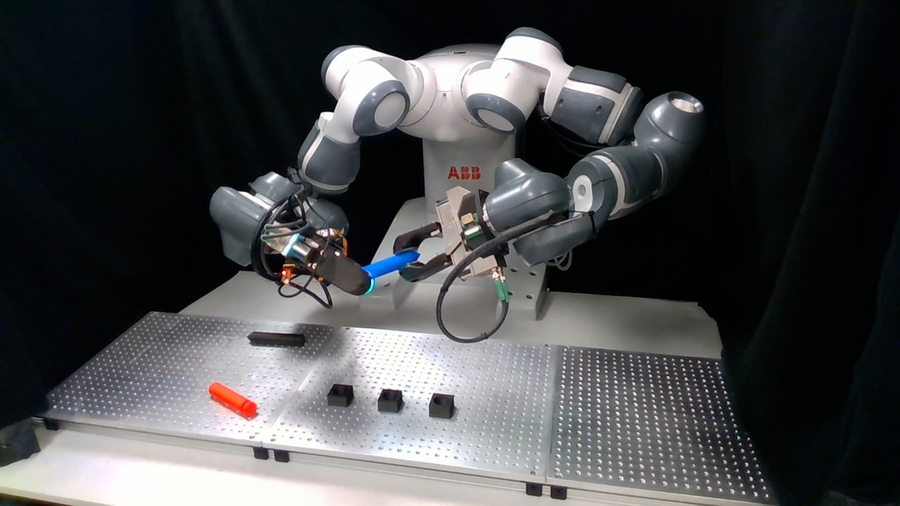2024-08-09 マサチューセッツ工科大学(MIT)

Image: John Freidah/MIT Department of Mechanical Engineering
<関連情報>
- https://news.mit.edu/2024/new-model-offers-robots-precise-pick-place-solutions-0809
- https://www.science.org/doi/10.1126/scirobotics.adi8808
SimPLE、シミュレーションで学習した視覚的な手法で、物体を正確にピッキング、位置決め、再把持、配置する SimPLE, a visuotactile method learned in simulation to precisely pick, localize, regrasp, and place objects
Maria Bauza, Antonia Bronars, Yifan Hou, Ian Taylor, […], and Alberto Rodriguez
Science Robotics Published:26 Jun 2024
DOI:https://doi.org/10.1126/scirobotics.adi8808
Editor’s summary
In robotic manipulation, there is often a trade-off between high accuracy for a repetitive motion and reliability in an unstructured environment. To teach a robot to move objects into an organized arrangement, Bauza et al. have developed a framework called SimPLE, which stands for Simulation to Pick, Localize, and placE. Given only a model of the object, the framework generates training data by sampling grasps in simulation. The SimPLE framework was tested with a set of 15 objects of different geometries on a dual-arm robot equipped with tactile sensors and an external depth camera. Using hand-to-hand regrasps, the robot successfully relocated the objects into structured arrangements, demonstrating the possibility of transferring a model learned in simulation to a real robot. —Melisa Yashinski
Abstract
Existing robotic systems have a tension between generality and precision. Deployed solutions for robotic manipulation tend to fall into the paradigm of one robot solving a single task, lacking “precise generalization,” or the ability to solve many tasks without compromising on precision. This paper explores solutions for precise and general pick and place. In precise pick and place, or kitting, the robot transforms an unstructured arrangement of objects into an organized arrangement, which can facilitate further manipulation. We propose SimPLE (Simulation to Pick Localize and placE) as a solution to precise pick and place. SimPLE learns to pick, regrasp, and place objects given the object’s computer-aided design model and no prior experience. We developed three main components: task-aware grasping, visuotactile perception, and regrasp planning. Task-aware grasping computes affordances of grasps that are stable, observable, and favorable to placing. The visuotactile perception model relies on matching real observations against a set of simulated ones through supervised learning to estimate a distribution of likely object poses. Last, we computed a multistep pick-and-place plan by solving a shortest-path problem on a graph of hand-to-hand regrasps. On a dual-arm robot equipped with visuotactile sensing, SimPLE demonstrated pick and place of 15 diverse objects. The objects spanned a wide range of shapes, and SimPLE achieved successful placements into structured arrangements with 1-mm clearance more than 90% of the time for six objects and more than 80% of the time for 11 objects.



